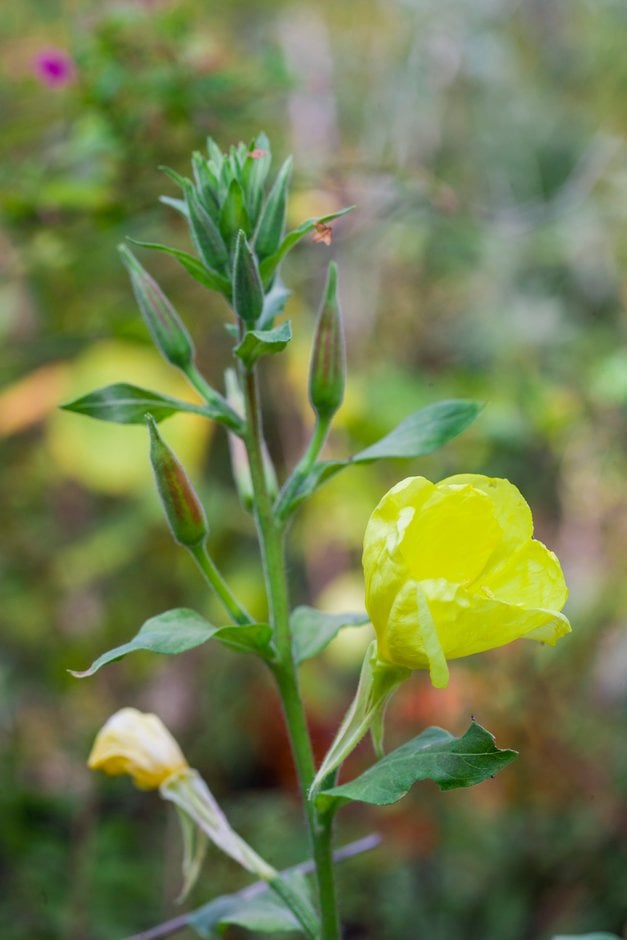Oenothera biennis
common evening primrose
A hairy annual or biennial usually grown as a binennial, to 1.5m, with a large basal rosette of slightly sticky, oblong red-veined mid-green leaves and long, leafy racemes of bowl-shaped, fragrant, yellow flowers which open in the evening in summer and autumn; evening primrose oil produced from seeds
Other common names
coffee plantfever plant
see morefield primrose
four o'clock
German rampion
large rampion
night willowherb
scabbish
scurvish
wild four o'clock
cure-all
Synonyms
Oenothera odorata Hook. & Arn.Oenothera stucchii
see moreOenothera rubricaulis
Oenothera glabra Miller
Oenothera pycnocarpa
Oenothera paradoxa
Oenothera ersteinensis
Size
Ultimate height
1–1.5 metresTime to ultimate height
1–2 yearsUltimate spread
0.1–0.5 metresGrowing conditions
Moisture
Well–drainedpH
Acid, Alkaline, NeutralColour & scent
| Stem | Flower | Foliage | Fruit | |
| Spring | Green | |||
|---|---|---|---|---|
| Summer | Yellow | Green | ||
| Autumn | Gold Yellow | Green | ||
| Winter |
Position
- Full sun
- Partial shade
Aspect
South–facing or West–facing
Exposure
Sheltered Hardiness
H7Botanical details
- Family
- Onagraceae
- Native to GB / Ireland
- No
- Foliage
- Deciduous
- Habit
- Columnar upright
- Genus
Oenothera can be annuals, biennials or perennials, upright or spreading in habit, with simple or lobed leaves and bowl-shaped, white, yellow or pink flowers over a long period in summer
- Name status
Correct
How to grow
Cultivation
Grow in poor to moderately fertile, well-drained soil in full sun
Propagation
Propagate by seed sown in early summer
Suggested planting locations and garden types
- Cottage and informal garden
- Wildflower meadow
- Wildlife gardens
- Flower borders and beds
Pruning
Cut back after flowering
Pests
Generally pest-free
Diseases
May be susceptible to powdery mildews and a leaf spot
Get involved
The Royal Horticultural Society is the UK’s leading gardening charity. We aim to enrich everyone’s life through plants, and make the UK a greener and more beautiful place.
